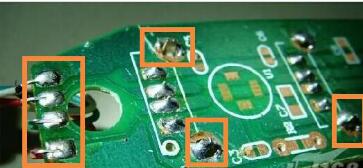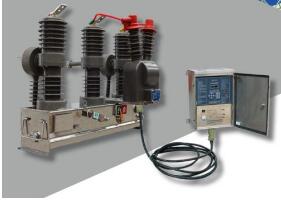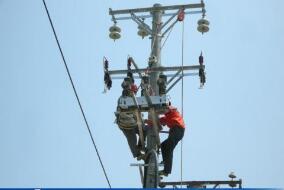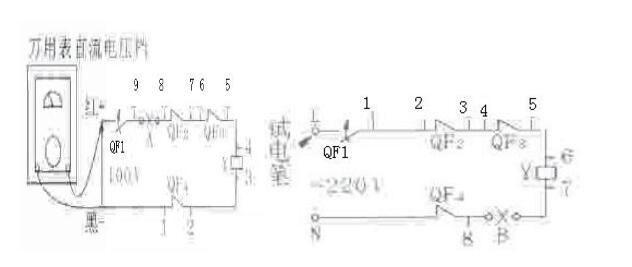Short circuit, then all the current can be passed, then the appliance can be seen as a wire, no resistance, the ammeter can be seen as a short circuit in the circuit, so the ammeter can not be used alone in parallel with the appliance, the appliance is shorted, Then, the number of currents connected in series increases, and the number of voltages connected in parallel with the electric appliance decreases. The disconnection means that all the currents cannot pass through, and even the branch of the voltmeter can be regarded as an open circuit and no current passes. The current of the disconnected branch represents 0 and the voltage represents a large number. Method 1: According to Ohm's law I = U/R, since the resistance of the wire is very small, the current on the circuit when the power supply is short-circuited can be very large. So use an ammeter to measure the current in the current. If it is too large, it is a short circuit. Method 2: When the short circuit current is directly through the wire, the circuit part of the short circuit resistance is very small, use ohmmeter to measure the resistance, if very small, it is a short circuit. (2) Open circuit: When the circuit does not close the switch, or the wire is not connected, or the electrical device is burned or not installed (such as the voltmeter in series in the circuit), the entire circuit is disconnected somewhere. The circuit in this state is called an open circuit (also called an open circuit). Method 1: The disconnection is equivalent to an infinite resistance, sharing all the voltages. Therefore, the voltage between two points is gradually detected by a voltmeter. If the voltage is the power supply voltage, the two points are interrupted. Then gradually narrow the detection range. Method 2: Test method, one end of the ammeter is connected to the negative pole of the power supply, one end is held in the hand and the test starts from the negative pole. If no reading is taken during the connection, the test is continued. Until there is a reading, the disconnection is at the last test point and the previous test point. between. Welds are broken. Welds are generally caused by oxidized or contaminated solder joints, poor soldering temperatures, and improper methods. The essence is that there is a separation layer between the solder and the pins. They are not completely in contact. It is generally impossible to see the state of the naked eye. However, its electrical characteristics do not lead to conduction or poor conduction, affecting circuit characteristics. So, in general, Weld Weld is judged to be open circuit. Even though the Weld Weld is an open circuit, the method steps for detecting the circuit breaker with the multimeter are the same. Then follow the Xiaobian to learn more about it: 1, maintenance of faults Circuit breaking fault refers to a fault in which one circuit of a circuit is disconnected abnormally so that current cannot flow in the circuit. 1.1, the phenomenon and hazard of open circuit fault The most basic form of circuit failure is the circuit failure. For example, disconnection, poor electrical contact, etc., in some cases, the disconnection will also cause voltage changes, the arc generated by the disconnection point may also cause electrical fire and explosion accidents. 1.1.1 Circuits must form a circuit to work properly. Breaking a certain circuit in the circuit often results in the loss of some or all functions of the electrical device (does not work). 1.1.2 In three-phase circuits, if a one-phase breaking fault occurs, the motor may be burned due to lack of phase operation; it may also cause three-phase circuits to be asymmetrical, the voltage of each phase changes, and the voltage of one of the phases increases. , causing a malfunction. In the three-phase circuit, if the neutral line (neutral line) is disconnected, the single-phase load will have a greater effect. 1.2. Finding Causes of Open Circuit Failures To troubleshoot an open circuit, first of all, determine the approximate scope of the open circuit fault, that is, at which line segments, under which conditions it is prone to open circuit faults. 1.2.1. The electrical contact point is the multiple point of the open circuit fault: In the circuit, besides the electrical contact points such as the switch contacts, it is easy to cause the disconnection fault due to poor contact, and other electrical contact points in the circuit are also prone to open circuit faults. a. Conductor interconnection points: The conductor connection points of any connection method, such as splicing, crimping, welding, bolting, etc., are the multiple points of failure of the circuit breaker; b. Force point of wire: Under the action of external force or repeated action force, it is also prone to open circuit failure; c. Copper-aluminum transition point: Under electrochemical corrosion, it is most likely to cause poor contact and cause circuit failure. 1.2.2. Breaking faults caused by a virtual contact and a dummy solder joint: A connection point that does not actually touch the contact surface is called a virtual contact point. If it is a soldered connection, it is a dummy solder joint. With soldering iron soldered connections, if the soldering iron temperature is low, the wire is not completely melted, or the rosin is too much and not completely melted, it may cause a virtual solder joint. Such virtual contacts and imaginary solder joints cannot be distinguished by the naked eye and can only be detected by borrowing instruments. 1.2.3. Dust can also cause circuit failure: The contact of a contactor coil is very normal, but it cannot connect the circuit. After inspection, the contactor is stained with a layer of dust, resulting in poor contact, similar to this. Circuit breakdown due to dust, oil, rust, etc. is also common. 1.3, repair broken faults First of all, according to the fault phenomenon should be judged to belong to the open circuit fault, and then determine the range of open circuit fault and short circuit according to the location of possible faults, and then use the detection tool to find the short circuit point. 1.3.1 Voltage method: When the circuit is disconnected, no current flows through the circuit. Various voltage-reducing elements in the circuit no longer have a voltage drop, and the power supply voltage all lands at both ends of the disconnection point. Therefore, the breaking point can be determined by measuring the voltage at the breaking point. In the simple circuit shown in Fig. 1, the power supply voltage is 100 V DC, and the solenoid Y is controlled through the normally open contact QF1 and the normally closed contacts QF2, QF3, and QF4. The test instrument is a universal multimeter, select the DC voltage 250 V gear (more than or equal to 100 V gear can be). Assume that the circuit has an open circuit fault point at A. After the normally open contact QF1 is closed (or shorted with a wire), the solenoid Y still cannot work. Connect the red meter of the multimeter to the “+†pole of the power supply, the black lead to the “-†pole of the power supply, the indicator of the multimeter should be 100 V, and then move the black meter pen, in turn, with the endpoints 1, 2, 3, 4, 5, 6, 7,8 connected, if the multimeter indication is also 100 V, then these points to the power supply "-" circuit no circuit fault. When the black pen moves to endpoint 9, the multimeter indicates zero, and the disconnection fault is between 8-9. At this time, if the voltage between 8-9 is measured again, it must be equal to the power supply voltage, and then it can be judged that this circuit has only one open failure point at A. 1.3.2 Resistance method: After a circuit breaks, the resistance at both ends of the break point is infinite, while the resistance of the other sections is approximately zero, and the resistance at both ends of the load is a fixed value. Therefore, you can find the trip point by measuring the resistance of each segment of the circuit. The value of the sense resistor is generally measured using a multimeter ohm (Ω) block. Taking Figure 2 as an example, assume that the circuit has an open-circuit fault at point B. The search step is to disconnect the power supply. Place the multimeter in the ohmic block, and generally select R×10 Ω or R×1 Ω, instead of selecting R×1 kΩ or higher, to avoid errors. Connect a test lead of the multimeter to the L point in the circuit. Hold the other test lead and connect it to 1 point. Since the power supply L and 1 are normally open contacts, they should be manually closed and then disconnected. Header indication to check if this contact is normal. Then short-circuit the normally open contact QF1, and then connect the test leads to 2~8 in sequence. At 7 o'clock, the multimeter indicates that the resistance is the resistance RY of the coil Y, ie, R1-7=RY. At 8 o'clock, the multimeter indicates that the resistance is ∞, then the disconnection fault occurs at the connection between 7-8. Marine pressure controller,Marine pressure ,pressure controller Taizhou Jiabo Instrument Technology Co., Ltd. , https://www.jbcbyq.com




Welds are short-circuited or open-circuited
What is a short circuit and open circuit